You are using an out of date browser. It may not display this or other websites correctly.
You should upgrade or use an alternative browser.
You should upgrade or use an alternative browser.
- Joined
- 11 February 2010
- Messages
- 1,453
- Reaction score
- 1,957
Anybody knows why the aircraft re-installs the engine nozzle flaps?
GE-F129 Engine, which doesnt have PW engine's apparent problem with vibration AFAIK.
But, the F-16 use the F100-PW-229 with nozzle flap.Anybody knows why the aircraft re-installs the engine nozzle flaps?
GE-F129 Engine, which doesnt have PW engine's apparent problem with vibration AFAIK.
Manuducati
ACCESS: Secret
- Joined
- 25 November 2020
- Messages
- 228
- Reaction score
- 640
Because the vibration problem is specific to the F-15 Eagle.But, the F-16 use the F100-PW-229 with nozzle flap.Anybody knows why the aircraft re-installs the engine nozzle flaps?
GE-F129 Engine, which doesnt have PW engine's apparent problem with vibration AFAIK.
- Joined
- 11 February 2010
- Messages
- 1,453
- Reaction score
- 1,957
But, the F-16 use the F100-PW-229 with nozzle flap.
and only one of it.
- Joined
- 15 January 2021
- Messages
- 232
- Reaction score
- 755
The airflow field at the back end of the F-15 with the closely spaced round nozzles and vertical stabilizers is very turbulent. This resulted in heavy wear and occasional liberation of the external flaps “ turkey feathers “ on the F100-PW-100 engines. The USAF was spending a lot of man hours and $$ maintaining them, and after performance testing showed virtually no drag increase, the decision was made to take them off on the -100 engine.
In the l997 time frame, GE paid for a service evaluation where two F-15E airframes at Nellis AFB had F110-GE-129 engines installed and were flown for approximately 18 months in that configuration. About 6 months in after a significant amount of maintenance on the nozzles, the external flaps were removed from those Service Eval -129 engines.
I don’t know when it occurred, but the USAF also removed the external flaps on the F101 engines on the B-1B, which is another installation with closely spaced round nozzles.
When the F100-PW-229 was developed, the external flaps were redesigned with a composite material construction and a revised mounting. Flight test determined that these external flaps would survive in the F-15 environment. The USAF decided to save the money and -229s for F-15E were delivered without the external flaps
Why have them installed on -129 engines in the F15EX? There are some signature benefits for covering up the hot internal nozzle parts. Has GE improved the design of the -129 external flaps since the 1997 version sufficiently to survive long term at the back end of the F-15? Time will tell.
In the l997 time frame, GE paid for a service evaluation where two F-15E airframes at Nellis AFB had F110-GE-129 engines installed and were flown for approximately 18 months in that configuration. About 6 months in after a significant amount of maintenance on the nozzles, the external flaps were removed from those Service Eval -129 engines.
I don’t know when it occurred, but the USAF also removed the external flaps on the F101 engines on the B-1B, which is another installation with closely spaced round nozzles.
When the F100-PW-229 was developed, the external flaps were redesigned with a composite material construction and a revised mounting. Flight test determined that these external flaps would survive in the F-15 environment. The USAF decided to save the money and -229s for F-15E were delivered without the external flaps
Why have them installed on -129 engines in the F15EX? There are some signature benefits for covering up the hot internal nozzle parts. Has GE improved the design of the -129 external flaps since the 1997 version sufficiently to survive long term at the back end of the F-15? Time will tell.
Last edited:
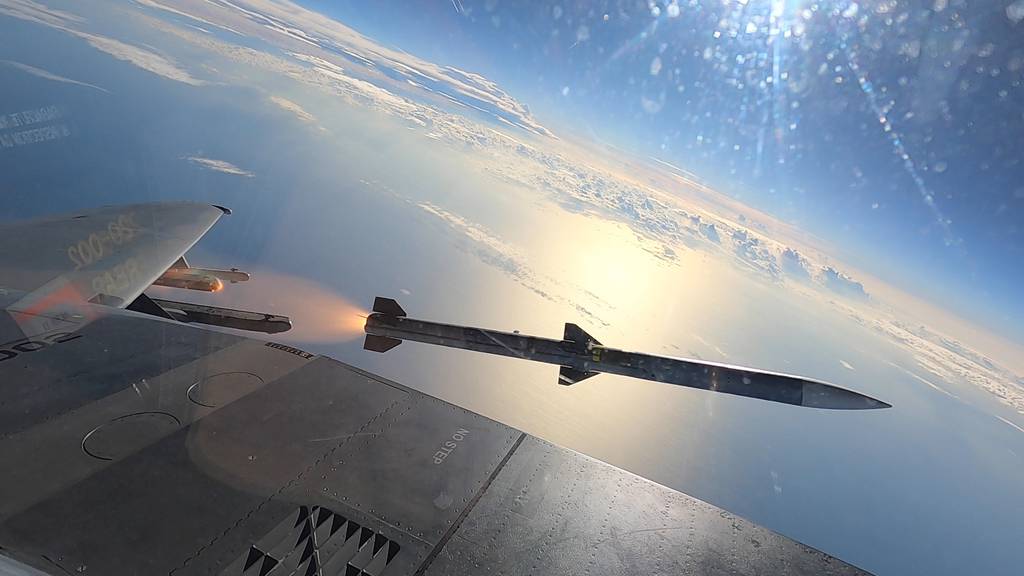
F-15EX tests added missile capabilities
The tests place the F-15EX one step closer to carrying more missiles than any other U.S. Air Force fighter.
- Joined
- 21 April 2009
- Messages
- 13,170
- Reaction score
- 6,060
Warplanes: F-15EX Breaks The Right Records At The Right Time
After two years of testing the US Air Force has found that it’s new F-15EX fighter exceeds expectations in terms of number and tonnage of weapons carried The F-15EX has been tested carrying and launching up to 12 air-to-air missiles Previously
Colonial-Marine
UAVs are now friend, drones are the real enemy.
- Joined
- 5 October 2009
- Messages
- 1,197
- Reaction score
- 709
Vibration problem? I thought they were just kept removed because the nozzles themselves required a lot of maintenance?Because the vibration problem is specific to the F-15 Eagle.But, the F-16 use the F100-PW-229 with nozzle flap.Anybody knows why the aircraft re-installs the engine nozzle flaps?
GE-F129 Engine, which doesnt have PW engine's apparent problem with vibration AFAIK.
Manuducati
ACCESS: Secret
- Joined
- 25 November 2020
- Messages
- 228
- Reaction score
- 640
See post #1006 just above for a complete answer from @F119Doctor .
Israel requests 25 F-15EX to be delivered as soon as 2028:
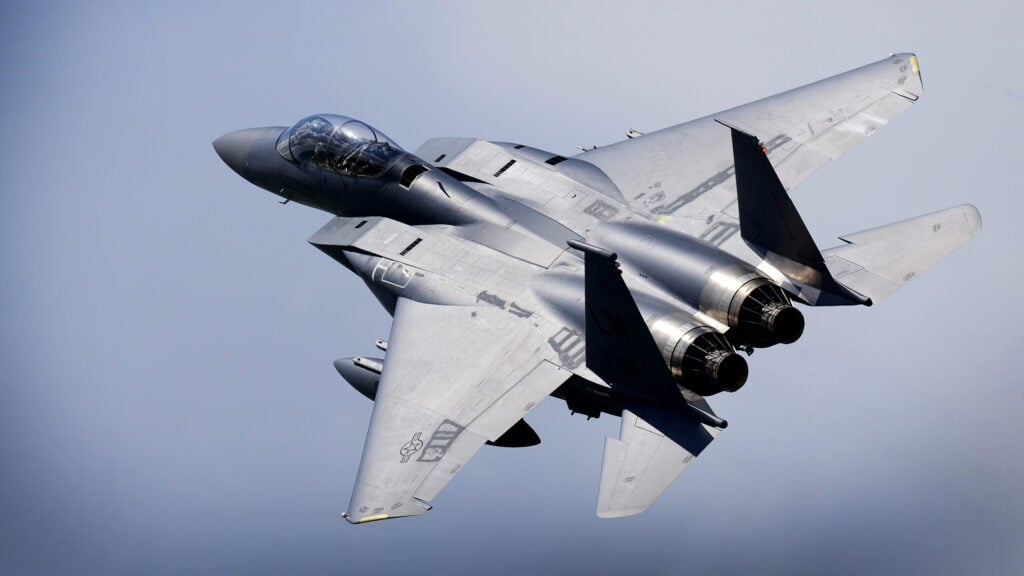
 breakingdefense.com
breakingdefense.com

Israel formally requests 25 F-15 EX from the US: Sources - Breaking Defense
Jerusalem previously expressed interest in the F-15s, along with F-35s, but political instability delayed the official move.
Last edited:
- Joined
- 16 April 2008
- Messages
- 8,398
- Reaction score
- 10,359
Interesting. They have a very small inventory of F-15E analogs (Ra’am?); I was under the impression that they felt the F-16 Sulfas handled the mission more cost effectively.
Seems that they have a specific deep hard-target penetrator weapon in mind that is probably too heavy for the F-16 and likely only fits on the F-15 centerline hard point.
FighterJock
ACCESS: Top Secret
- Joined
- 29 October 2007
- Messages
- 4,222
- Reaction score
- 3,413
Interesting. They have a very small inventory of F-15E analogs (Ra’am?); I was under the impression that they felt the F-16 Sulfas handled the mission more cost effectively.
Seems that they have a specific deep hard-target penetrator weapon in mind that is probably too heavy for the F-16 and likely only fits on the F-15 centerline hard point.
So Israel becomes the first export customer for the F-15EX Eagle 2 because of the problem of the hard-target penetrator weapon. Any thoughts on other weapons apart from the hard-target penetrator.
- Joined
- 3 June 2011
- Messages
- 17,332
- Reaction score
- 9,070
(Apparently the wing pylons are rated for 7,000lbs. See video I just posted above, towards the end.)Interesting. They have a very small inventory of F-15E analogs (Ra’am?); I was under the impression that they felt the F-16 Sulfas handled the mission more cost effectively.
Seems that they have a specific deep hard-target penetrator weapon in mind that is probably too heavy for the F-16 and likely only fits on the F-15 centerline hard point.
- Joined
- 16 April 2008
- Messages
- 8,398
- Reaction score
- 10,359
Apparently the wing pylons are rated for 7,000lbs. See video I just posted above, towards the end
I guess that makes sense. Those big drop tanks can't be light either.
Dreamfighter
'Senior Something'
- Joined
- 13 July 2008
- Messages
- 399
- Reaction score
- 384
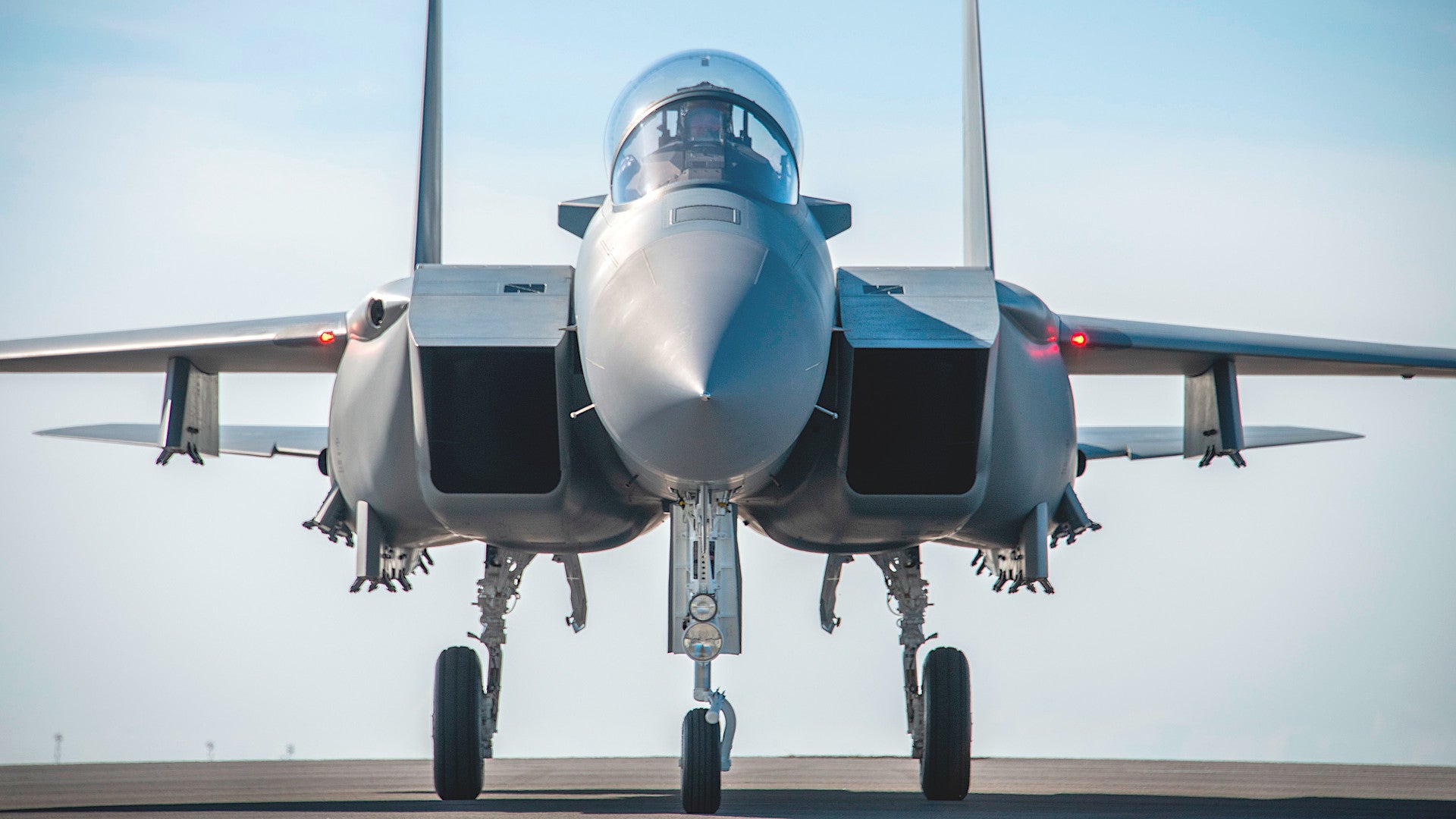
F-15EX First Operational Units Will Not Get Conformal Fuel Tanks (Updated)
A Pentagon report reveals that much-touted range-extending conformal fuel tanks will not be found on the first F-15EXs that enter service.

F-15EX First Operational Units Will Not Get Conformal Fuel Tanks (Updated)
A Pentagon report reveals that much-touted range-extending conformal fuel tanks will not be found on the first F-15EXs that enter service.www.thedrive.com
For the F-15C mission, conformals probably aren't needed. Probably a cost cutting measure that will be remedied if/when these aircraft switch roles.
Dreamfighter
'Senior Something'
- Joined
- 13 July 2008
- Messages
- 399
- Reaction score
- 384
Whatever the reason, when they jettison their drop-tanks or take off without them, EX-drivers will now get the opportunity to fully enjoy the kinematics and manoeuvrability of CFT-less F-15s with digital FBW and 2x F110-GE-129.
BDF
ACCESS: Secret
- Joined
- 14 March 2009
- Messages
- 250
- Reaction score
- 267
I'm really enjoying Mooch's channel. I found the one comment he made about a friend who's a Raptor driver and how when its only F-22s it's harder for them to hide their emissions but when 4th gens are part of the mix its much easier to hide. A very interesting anecdote on the benefits of 4th-5th gen teaming.
Israel F-15EX (known as IA in Israel) to be delivered, at best, in 2028:
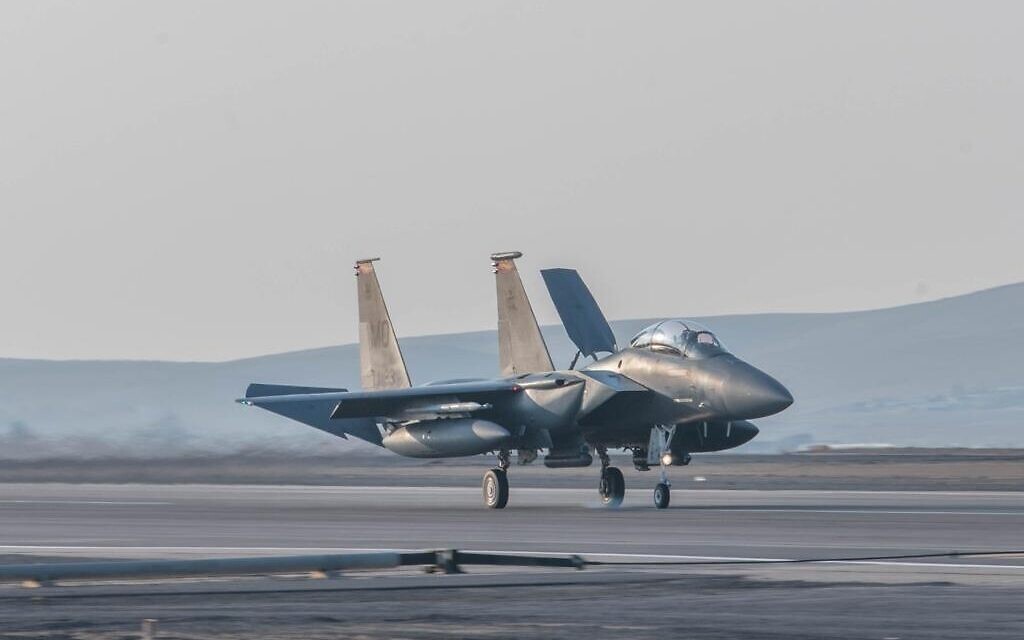
 www.timesofisrael.com
www.timesofisrael.com
There is no timeline yet, but the earliest Israel would likely receive the new jets would be in 2028. Israel is expected to push for faster delivery. Colbert said Boeing was working “as fast as it can” to supply the aircraft to Israel as soon as possible.

Senior Boeing official in Israel to push sale of advanced F-15 jets for Iran strike
Ted Colbert meets PM Netanyahu and defense minister Gallant, says trip shows firm's commitment to supporting 'long arm of Israel,' with F-15IA jets and KC-46 tankers
Dreamfighter
'Senior Something'
- Joined
- 13 July 2008
- Messages
- 399
- Reaction score
- 384
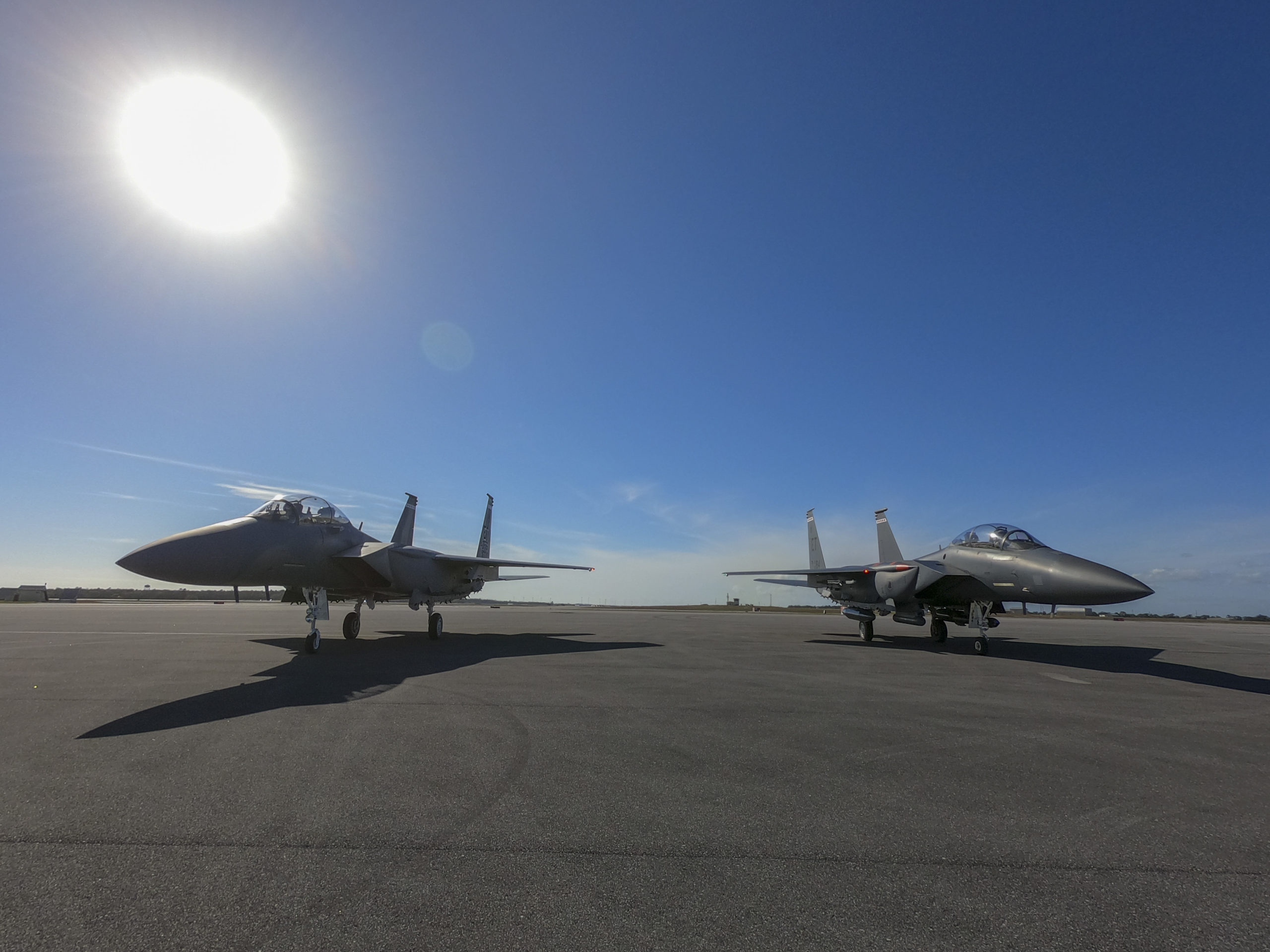
The Air Force Changed Its Mind on Some Cuts to the F-15EX Buy—But Won’t Go Any Farther, Kendall Says
The Air Force reversed course and said it wanted to buy more F-15EX fighters in its 2024 budget, but leaders say they don’t want any more.
"A year after Air Force officials said they had decided to cut their planned fleet of F-15EX Eagle IIs from 144 to 80, the service reversed course—partially—and upped its buy in the 2024 budget to fulfill the homeland defense mission and ensure it reached a goal of 72 new fighters per year, top Air Force leaders said March 15." ...
"The additional batch of F-15EXs will give the Air Force 104 total, up from the 80 it detailed in last year’s budget request. The Air Force originally planned to buy 144 F-15EXs, but a final inventory of 104 jets will remain the Air Force’s position—at least for now."
Dreamfighter
'Senior Something'
- Joined
- 13 July 2008
- Messages
- 399
- Reaction score
- 384

The Air Force Changed Its Mind on Some Cuts to the F-15EX Buy—But Won’t Go Any Farther, Kendall Says
The Air Force reversed course and said it wanted to buy more F-15EX fighters in its 2024 budget, but leaders say they don’t want any more.www.airandspaceforces.com
"A year after Air Force officials said they had decided to cut their planned fleet of F-15EX Eagle IIs from 144 to 80, the service reversed course—partially—and upped its buy in the 2024 budget to fulfill the homeland defense mission and ensure it reached a goal of 72 new fighters per year, top Air Force leaders said March 15." ...
"The additional batch of F-15EXs will give the Air Force 104 total, up from the 80 it detailed in last year’s budget request. The Air Force originally planned to buy 144 F-15EXs, but a final inventory of 104 jets will remain the Air Force’s position—at least for now."
In the article linked below, The Drive (The War Zone) meanwhile talks about 128 F-15EXs in total, when taking into account the Aviation Week report about 24 more F-15EXs for the FY2025 budget...
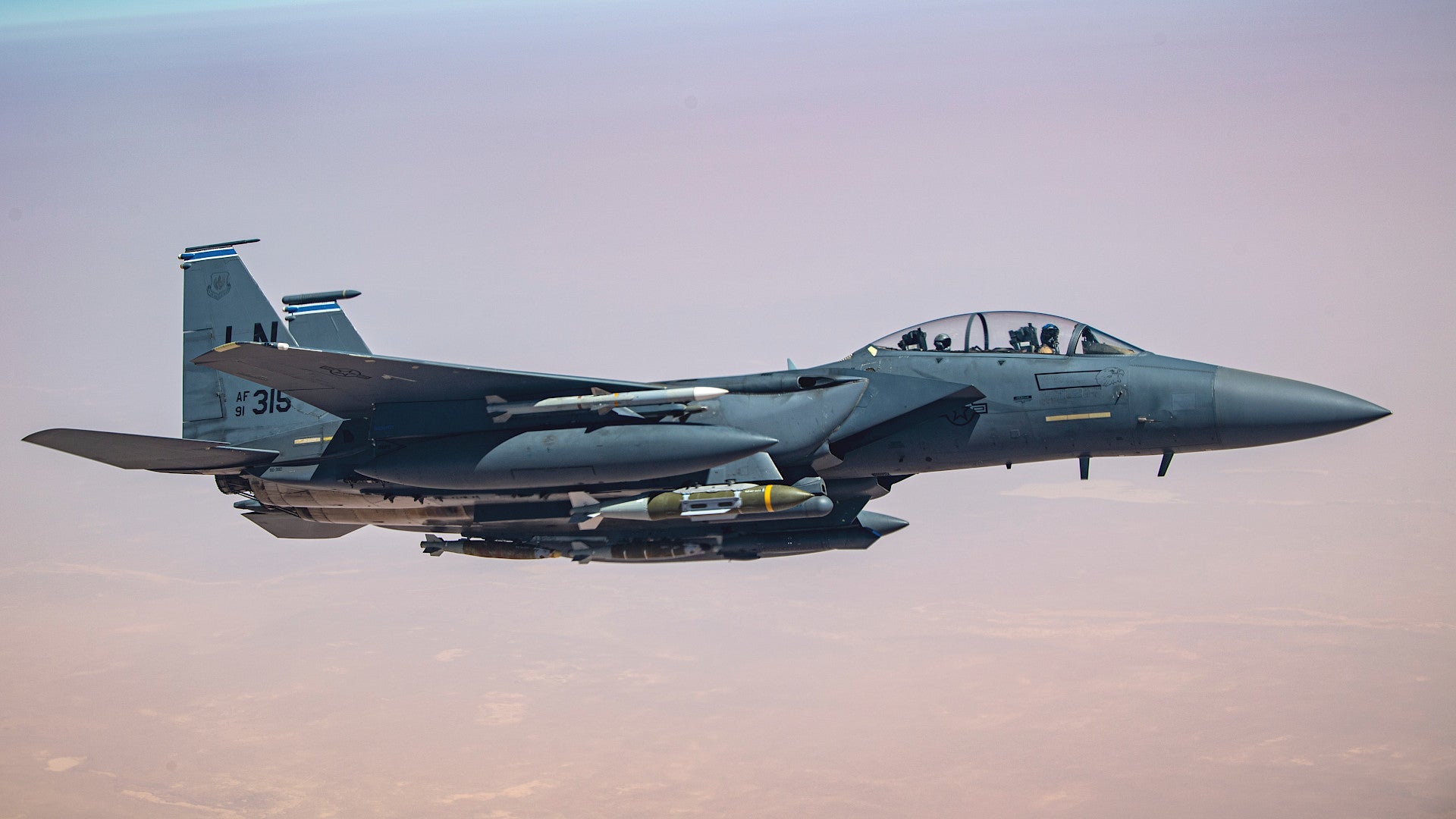
F-15E Strike Eagle Fleet To Be Slashed By Over Half: Report
Under the plan, the USAF will retire its F-15Es with less powerful engines even as the type remains one of the most in-demand in its stable.
"The Air Force is looking to buy 24 more Eagle IIs in the 2024 Fiscal Year, which would bring the total planned fleet size up to 104 aircraft. This is more than the 80-jet fleet the service had said it was looking at last year, but is still less than the at least 144 examples it originally said it would purchase.
Aviation Week's story yesterday said that the Air Force was looking to order another 24 jets in the 2025 Fiscal Year, but that this would be the final Eagle II buy. This would further bump the expected size of the F-15EX fleet up to 128 aircraft, but it's unclear where those additional Eagle IIs might be expected to go."
aonestudio
I really should change my personal text
- Joined
- 11 March 2018
- Messages
- 2,546
- Reaction score
- 5,969
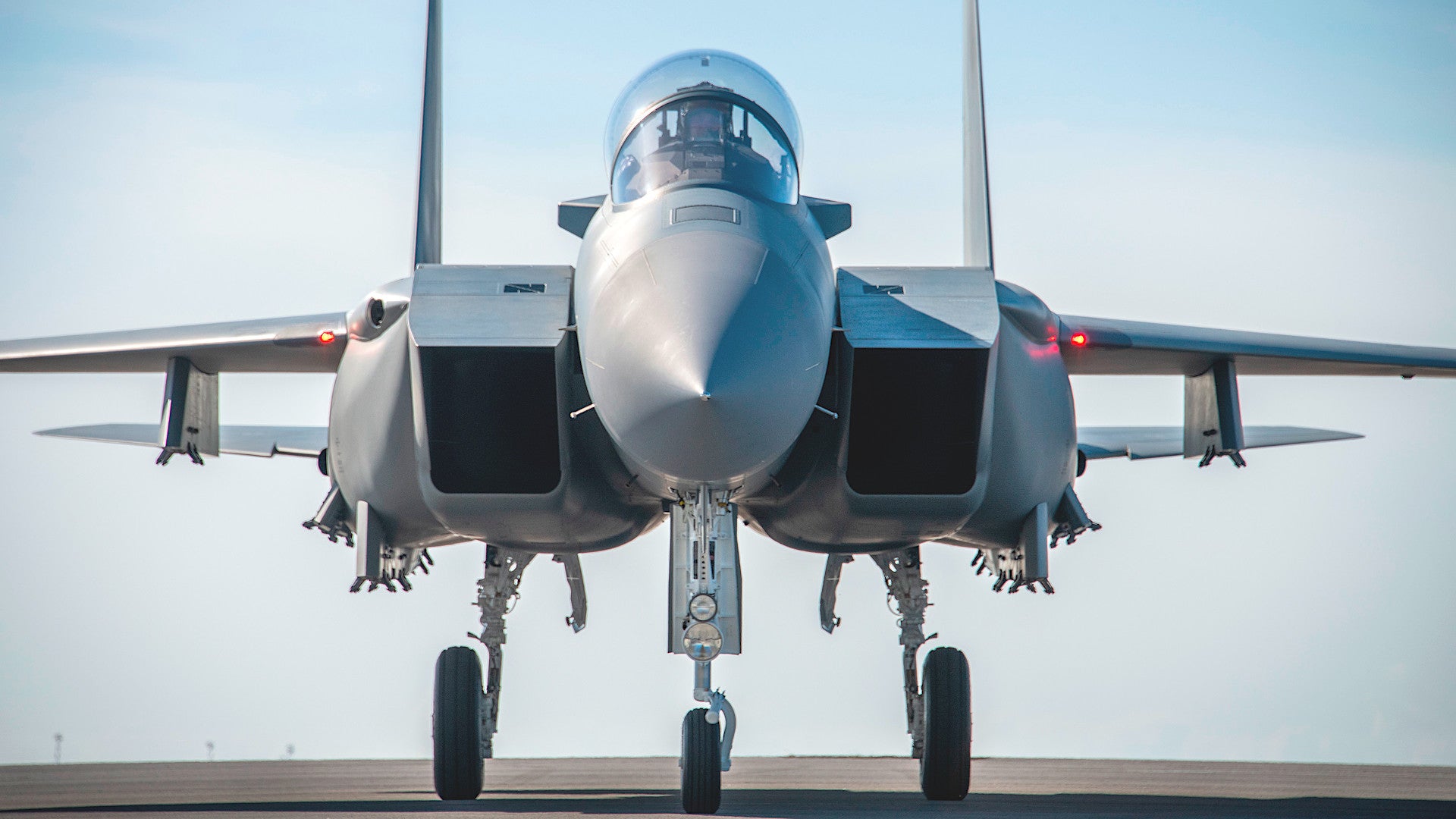
F-15EX Conformal Tank Funds Sought, Fleet Size Questions Reemerge
The Air Force wants to start buying conformal fuel tanks for its F-15EX jets, but budget documents cloud the force's plans for the type.
La-Fuente Technologies
NEXT GENERATION AIR DOMINANCE
- Joined
- 21 November 2022
- Messages
- 342
- Reaction score
- 272
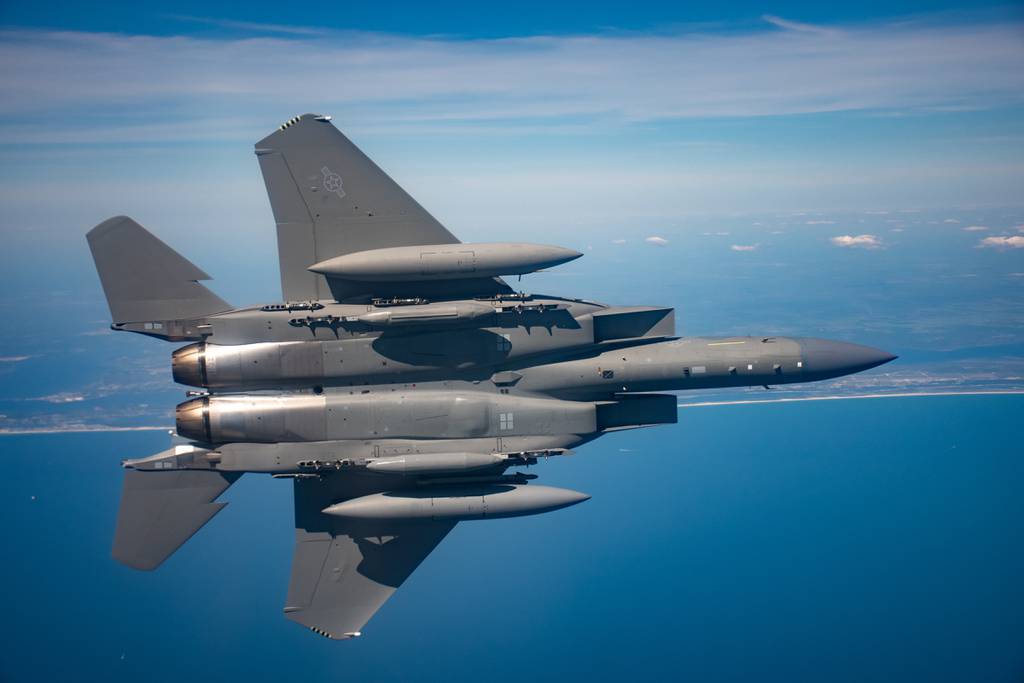
US Air Force plans to request 72 fighters every year
Top Air Force leaders have said for years that it needs to buy at least 72 new fighters each year to both modernize its fighter fleet and lower its age.
The fiscal 2024 budget proposal released in March broke that trend by directly asking for money to buy 48 new F-35As and 24 F-15EX Eagle IIs.
- Joined
- 16 April 2008
- Messages
- 8,398
- Reaction score
- 10,359
I wonder if any of F-15Es when they are retired would be converted into QF-15E target-drones?
Why? What would a QF-15 do that the QF-16 can't?
We've had surplus F-15A/B/C/D at Davis-Montham for years without feeling a need to convert them into drones.
The thinking now is that the QF-16 successor will need at least some stealth to accurately simulate adversary aircraft like the Su-57 or J-20. And will be a drone from the outset.
I wonder if any of F-15Es when they are retired would be converted into QF-15E target-drones?
Why? What would a QF-15 do that the QF-16 can't?
We've had surplus F-15A/B/C/D at Davis-Montham for years without feeling a need to convert them into drones.
The thinking now is that the QF-16 successor will need at least some stealth to accurately simulate adversary aircraft like the Su-57 or J-20. And will be a drone from the outset.
If you want to test the lethality of a new warhead against a large twin-engined fighter, you may want a QF-15.
Why? What would a QF-15 do that the QF-16 can't?
Why not? If they're available and they'd simulate large two-engined fighter/fighter-bomber targets as a surrogate for, say, the Su-34 or Su-35.
If you want to test the lethality of a new warhead against a large twin-engined fighter, you may want a QF-15.
This!
- Joined
- 16 April 2008
- Messages
- 8,398
- Reaction score
- 10,359
Why? What would a QF-15 do that the QF-16 can't?
Why not? If they're available and they'd simulate large two-engined fighter/fighter-bomber targets as a surrogate for, say, the Su-34 or Su-35.
If you want to test the lethality of a new warhead against a large twin-engined fighter, you may want a QF-15.
This!
The QFs are not primarily intended for warhead lethality testing. You do most of that in more controlled settings like arena tests. I mean, they only even expend the drones after about 300 hours, which means maybe 1 percent of their flights.
The QFs are needed to simulate enemy tactics and flight behavior. Increasingly, that means being able to simulate a reduced signature aircraft. Which is why the future of the targets like this is probably low-RCS drones.
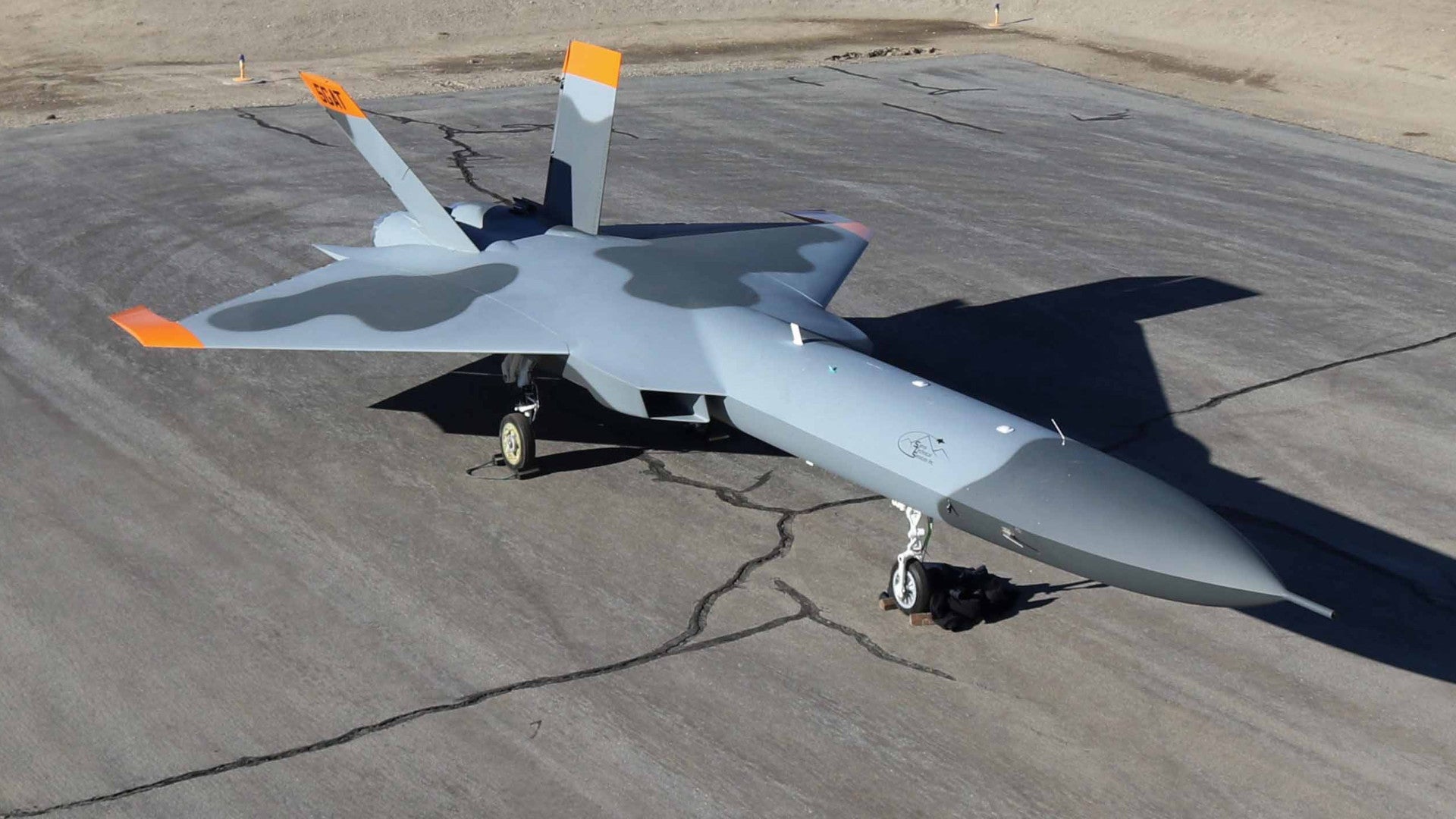
Stealthy Target Drones Sought As QF-16 Program Winds Down
The Air Force is trying once again to field new aerial targets that can mimic Chinese stealth fighters for testing purposes.
The USAF is looking into purpose built targets in the future. At this point it is easier to manufacture a high performance UAV than it is to convert an airframe; I suspect the QF-16s will be the last of their kind. If nothing else, the F-15Cs will be used long before the F-15Es are...and I can't see the F-15Es being representative targets by the time that airframe is that expendable.I wonder if any of F-15Es when they are retired would be converted into QF-15E target-drones?
Keep in mind nothing goes to target drone unless it is basically so old it can't be spare parts for active aircraft. Unless you are a lot younger than me, we'll die before F-15Es reach that mark, and more likely that kind of real testing will simply be taken over by cheaper UAVs rather than converted aircraft.
Lot 2 and beyond will see a slight price increase.
Boeing backs away from pricetag pledge for upcoming F-15EX production lots - Breaking Defense
Last year a Boeing executive stated that the sticker price for lots 2 and 3 of the modernized F-15s would be beneath $80 million, but calculations appear to have changed.
breakingdefense.com
- Joined
- 3 June 2011
- Messages
- 17,332
- Reaction score
- 9,070
Well it IS Boeing we're talking about.Lot 2 and beyond will see a slight price increase.
Boeing backs away from pricetag pledge for upcoming F-15EX production lots - Breaking Defense
Last year a Boeing executive stated that the sticker price for lots 2 and 3 of the modernized F-15s would be beneath $80 million, but calculations appear to have changed.breakingdefense.com
Actually its more McDonnell Douglas since their management basically took over.Well it IS Boeing we're talking about.Lot 2 and beyond will see a slight price increase.
Boeing backs away from pricetag pledge for upcoming F-15EX production lots - Breaking Defense
Last year a Boeing executive stated that the sticker price for lots 2 and 3 of the modernized F-15s would be beneath $80 million, but calculations appear to have changed.breakingdefense.com
- Joined
- 3 June 2011
- Messages
- 17,332
- Reaction score
- 9,070
If Boeing wants to brag about their shiny new F-15EX they can brag about their management too.Actually its more McDonnell Douglas since their management basically took over.Well it IS Boeing we're talking about.Lot 2 and beyond will see a slight price increase.
Boeing backs away from pricetag pledge for upcoming F-15EX production lots - Breaking Defense
Last year a Boeing executive stated that the sticker price for lots 2 and 3 of the modernized F-15s would be beneath $80 million, but calculations appear to have changed.breakingdefense.com
they can brag about their management too.
Or to be more precise the pernicious management legacy of the McDonnell Aircraft Corporation
Similar threads
-
-
J
-
-
-
Poland Attack Helicopter competition between Bell and Boeing
- Started by RavenOne
- Replies: 10
